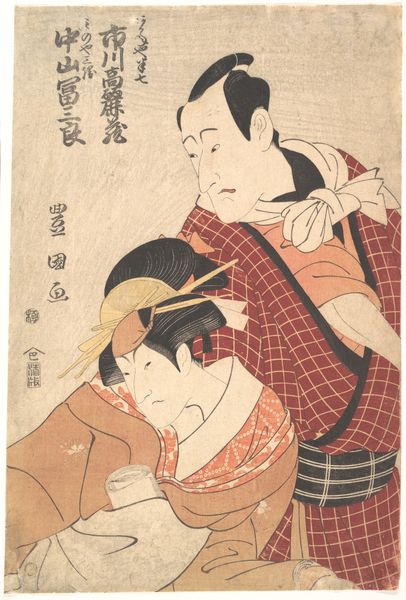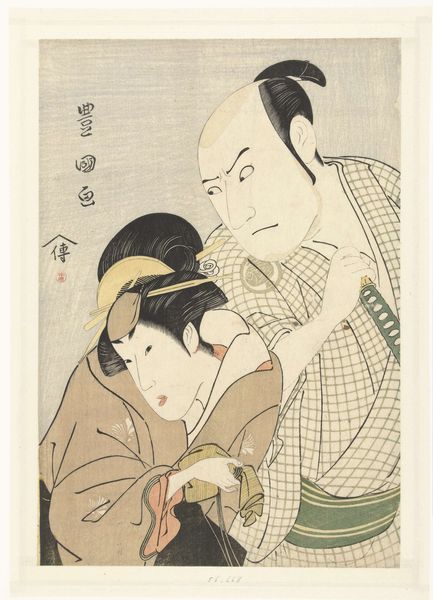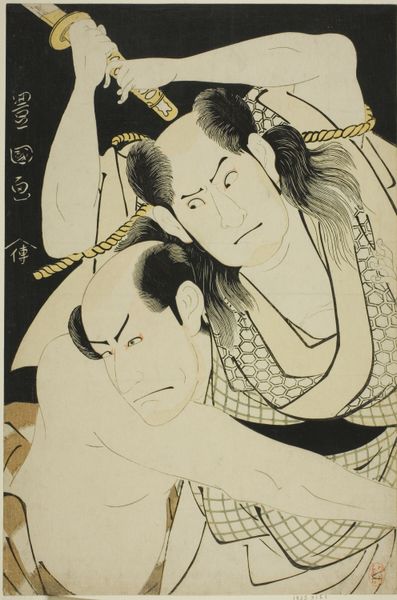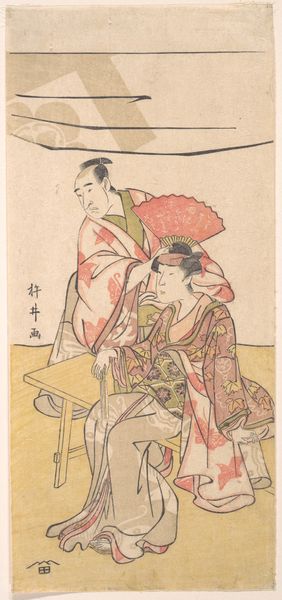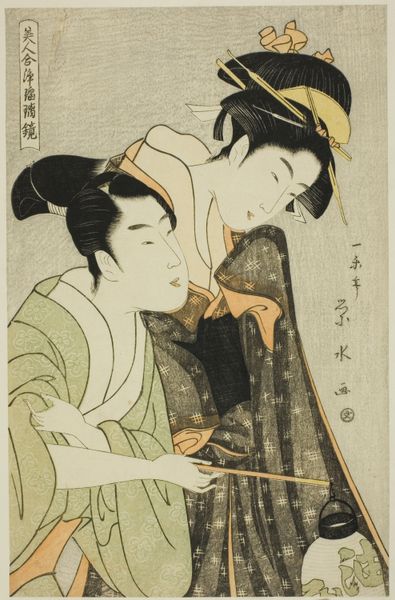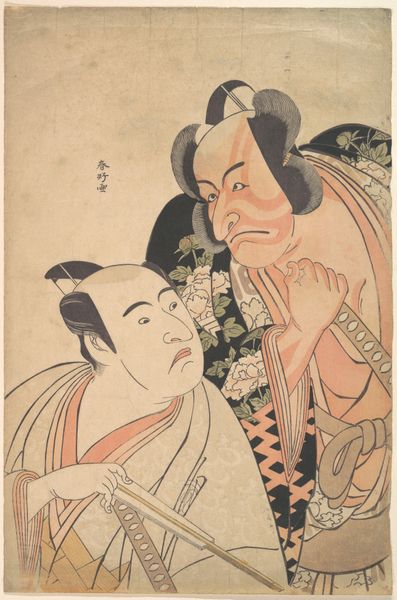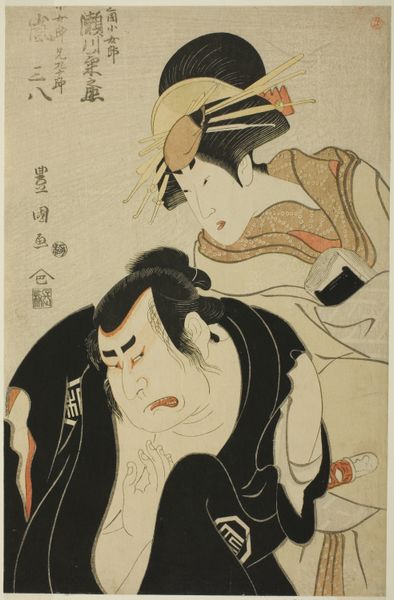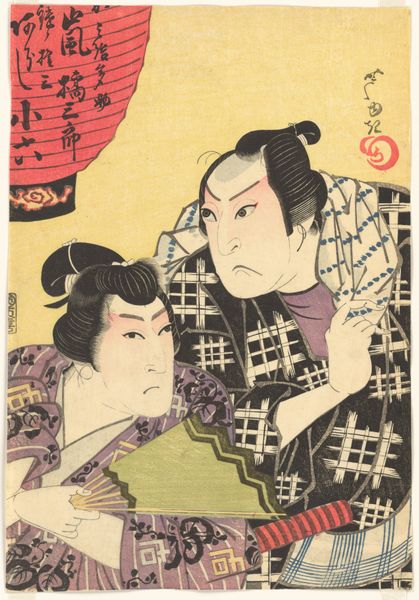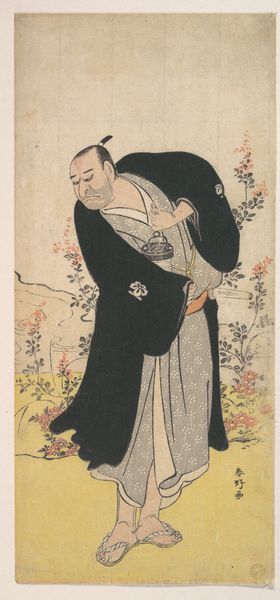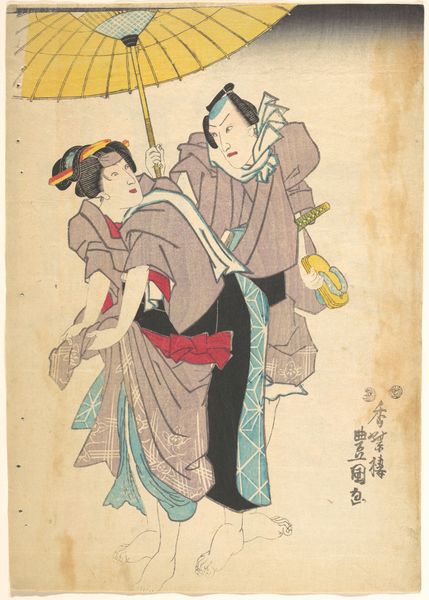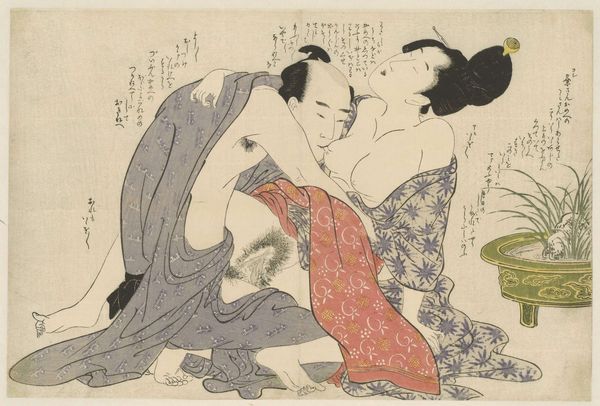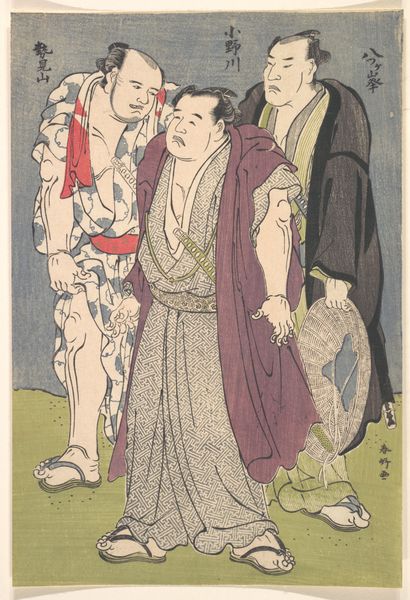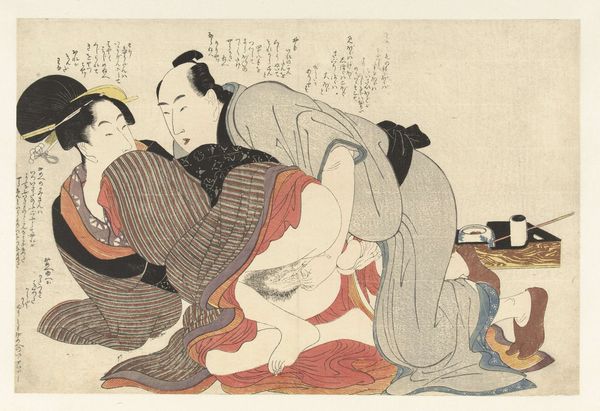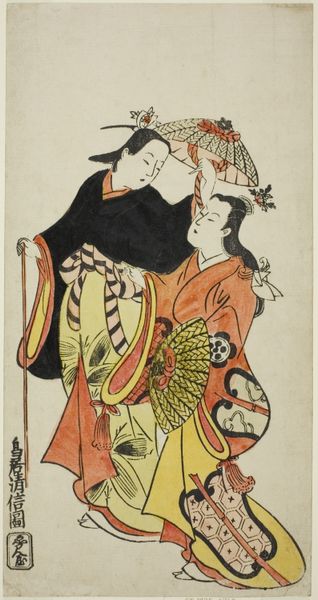
print, ink, woodblock-print
#
portrait
#
ink painting
# print
#
asian-art
#
ukiyo-e
#
figuration
#
ink
#
woodblock-print
#
genre-painting
Copyright: Public domain
Editor: So, here we have Toshusai Sharaku's woodblock print, "Nakajima Wadaemon I as Tanbaya Hachiemon," created in 1794. I'm immediately drawn to the actor's pose and the bold lines – it feels so raw and almost confrontational. What do you see in this piece? Curator: I see a fascinating example of the intersection of art and commerce. Ukiyo-e prints, like this one, weren't just artistic expressions; they were products of a complex system of production and consumption. Consider the materials: the woodblocks meticulously carved by artisans, the inks painstakingly applied, the paper itself, often made from mulberry bark, impacting its texture. These are tangible reminders of labor. Editor: So, you're saying that understanding the materiality can reveal insights into the economic realities of the time? Curator: Exactly. And not just the economic realities, but the social context as well. Think about who was consuming these prints: primarily the urban merchant class. These portraits of popular actors reflected and shaped their desires and aspirations. These images weren't merely representations, but active agents within a system of social and material exchange. Editor: That's a great perspective. It’s interesting to consider how the print’s availability and cost influenced who had access to art and entertainment. Did Sharaku challenge those existing limitations? Curator: Sharaku's work can be seen as both a reflection and critique of those systems. While catering to popular demand, his unflinching portrayal of actors also arguably subverted traditional artistic conventions. The imperfections, the exaggerated features, force us to reconsider the labor behind artistic expression, as well as the economic drivers behind Sharaku's career. Editor: I never thought about prints as consumer goods with such a social weight, rather than “just art.” Curator: Precisely! The artist, artisans, vendors and audience become actors in a performative production. By examining the print’s materials and modes of circulation, we uncover rich stories about 18th-century Japanese society.
Comments
No comments
Be the first to comment and join the conversation on the ultimate creative platform.
